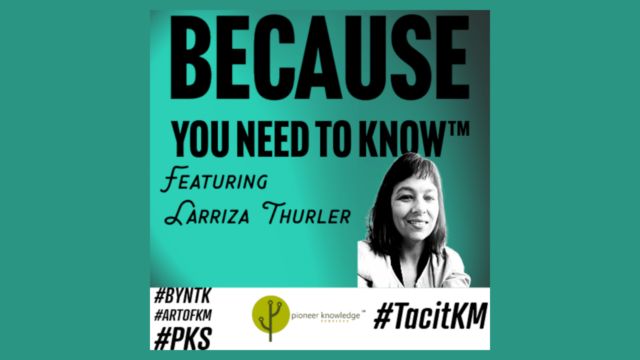
Design elements towards knowledge visualization efficacy [Knowledge visualization series part 4]
This article by Hanlie Smuts is part 4 of a series of articles exploring knowledge visualization aspects from an organizational perspective.
Knowledge visualization refers to the application of visual representation techniques from multiple visualization domains aiding knowledge-intense processes such as knowledge sharing among employees in an organization. Knowledge visualization in our organizational context support you to manage and reduce complexity, and to nurture understanding. It therefore supports the creation and transfer of insights between individuals and within teams as it supports learning, communication and interaction through new approaches and techniques. In this context, knowledge visualization may provide individuals and teams with a shared syntax for representing their knowledge, as they learn about their reciprocal interdependencies. It can also contribute to address assumptions made by individuals and teams at hand over points, as it presents border lines explicitly. I shared the framework in part 1 of the series and include it here for context and to show the topic areas of the series of articles.

Our focus for this part is on design elements. Design elements includes graphical excellence, legend and visual integrity. These are typical elements that relates to the interface with employees and in particular the usability of the knowledge visualization interface.
Visual integrity, points to the principle that the knowledge visualization should have uncompromising adherence to underlying knowledge and should not create a false impression or interpretation of that knowledge. The focus of graphical excellence is on usability of the visualization and ensuring that irrelevant items or decoration do not distract the target audience from the content of the topic. The legend element provides the information needed for the knowledge visualization to make sense and assists in explaining meaning and interpretation.
- Although you may be lured to apply an artistic perception of the knowledge that you are visualizing, ensure that the knowledge you want to share through your visualization, are not distorted.
- The dimensions in the knowledge visualization should be limited to the dimensions within the underlying knowledge to be shared.
- Ensure that your legends are undistorted and unambiguous. Leaving it open to interpretation may result in an unintended knowledge sharing outcome.
In part 5 of the series, I will describe the design principles relevant to the target audience you are creating the knowledge visualization for.
Next part (part 5): Knowledge visualization, it is about the context.
Header image source: Gerd Altmann on Pixabay, Public Domain.






